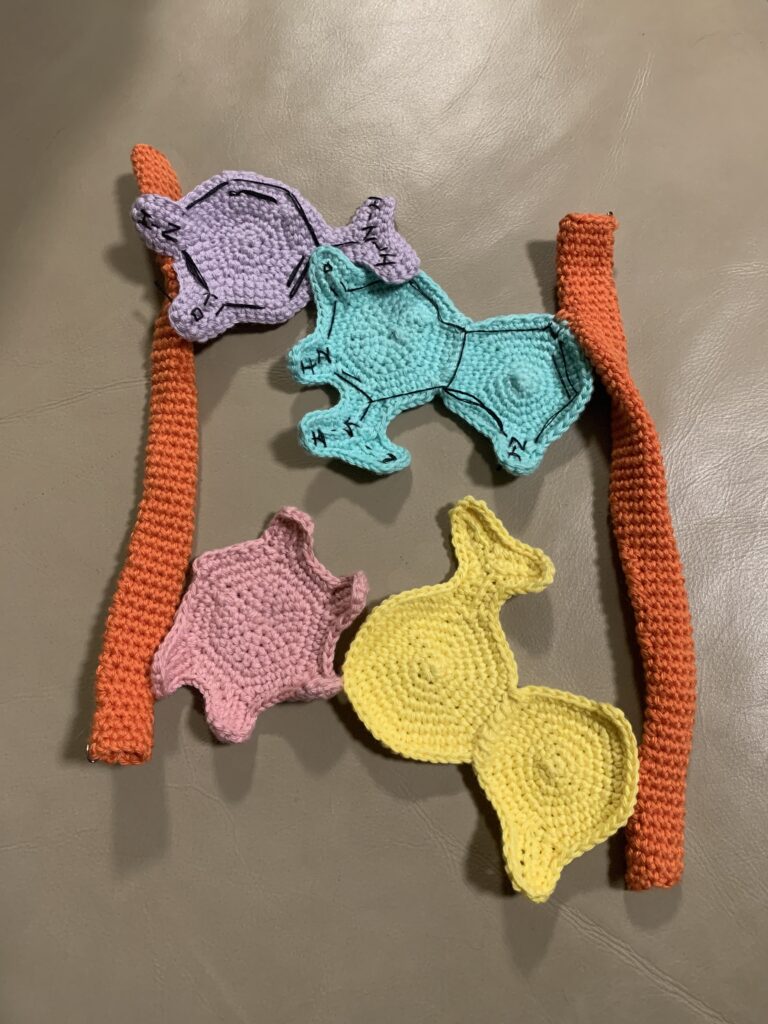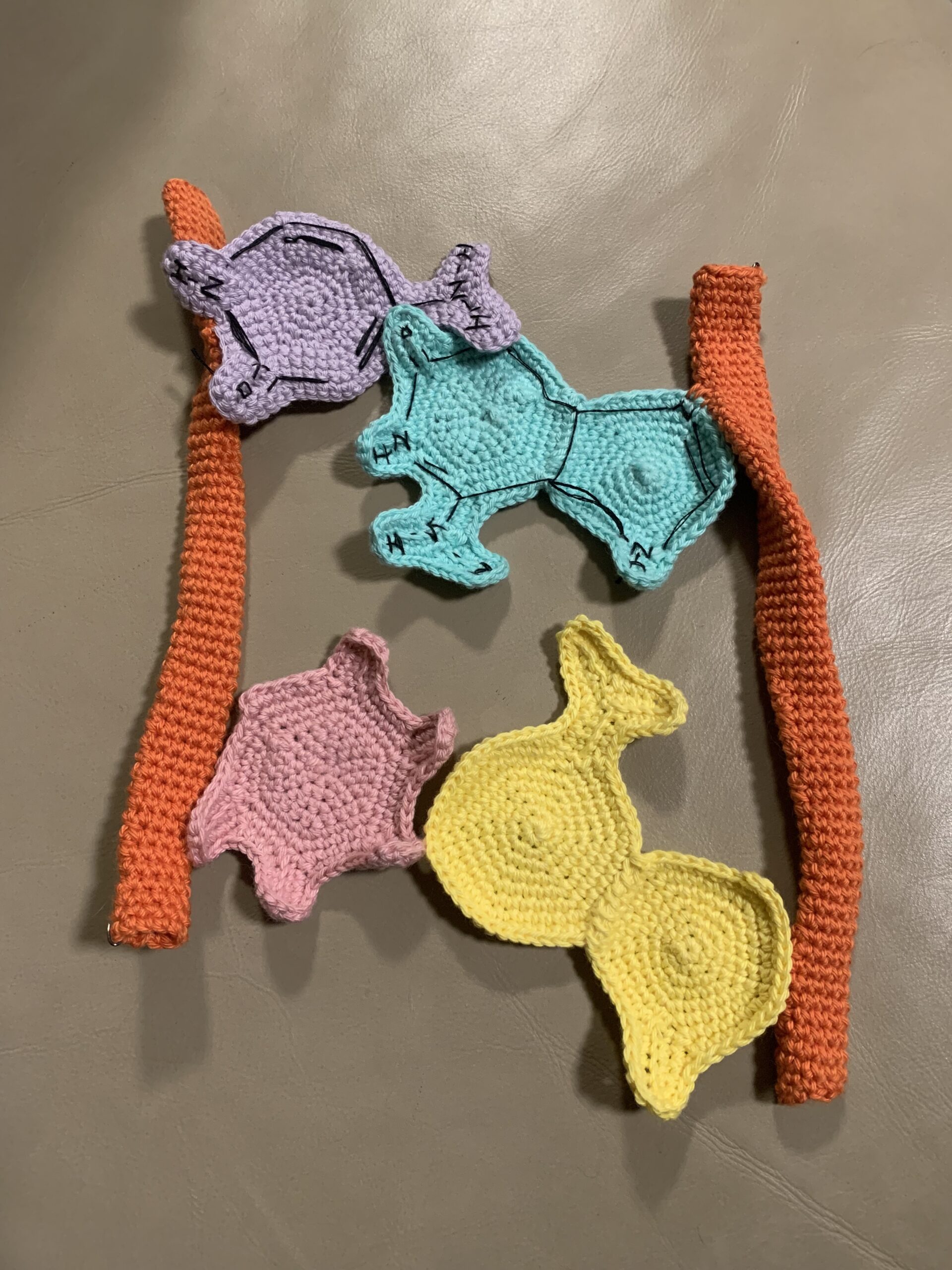DNA is a complex structure which enables all life on earth. Without it we would not exist. My project attempted to show the complex chemical relationships that enable the helical structure of DNA. Hydrogen bonds are the most important part of that structure. Ultimately, due to time constraints, I was unable to finish my project but it did enable my learning as I went through the painstaking process of making each stitch. I realized the extent to which hydrogen bonds are so reliant on the sugar phosphate backbone that creates that structure. The discovery of h-bonds in DNA traces back to the 1940s where this innovation allowed humanity to truly understand how our DNA is able to hold the metaphorical weight of our entire beings (Harding, 2019, pp. 38). This backbone creates the foundational structure for the important translation of the nucleotides which encode our DNA: adenine (A), cytosine (C), guanine (G), or thymine (T). These are created by attaching a five-carbon sugar to a phosphate groups and a nitrogen-containing base. (Alberts et al, 2002) Each of the colors represents a different nucleotide attached to the sugar phosphate backbone. James Michael Creeth is credited with helping to bring about the understanding of the helical structure of DNA with his 1948 thesis and illustrations (Harding et al, 2018). Now we understand how the helical structure helps to strengthen and enable translation of the nucleotide base pairs that make up our dna, without which we would cease to exist.

References
Alberts B, Johnson A, Lewis J, et al. Molecular Biology of the Cell. 4th edition. New York: Garland Science; 2002. The Structure and Function of DNA. https://www.ncbi.nlm.nih.gov/books/NBK26821/
Harding, S. E., Channell, G., & Phillips-Jones, M. K. (2018). The discovery of hydrogen bonds in DNA and a re-evaluation of the 1948 Creeth two-chain model for its structure. Biochemical Society transactions, 46(5), 1171–1182. https://doi.org/10.1042/BST20180158
Harding, S (2019) H-bonds and DNA. Biochem. 41 (4): 38–41. https://doi.org/10.1042/BIO04104038


I learned that hydrogen bonds are very important to the making of humans and all life on earth. The overall breakdown is that humans would cease to exist if we didn’t have DNA and hydrogen bonds. DNA is a helical structure, and hydrogen bonds are the most important to the structure. I learned that hydrogen bonds were noticed to be a part of the DNA structure in the 1940s, and thus allowed humans to understand that “DNA is able to hold the metaphorical weight of our entire being”.